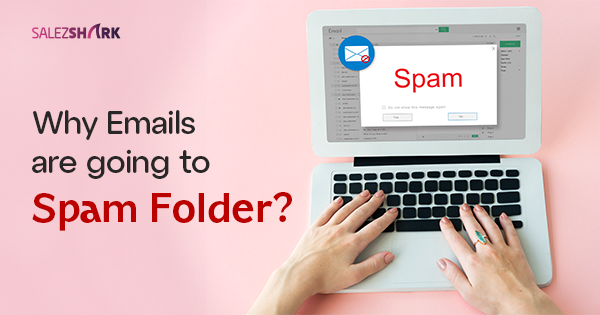Email marketing is a powerful tool for businesses, but one common frustration is seeing emails end up in the spam folder. To address this, it’s crucial to understand the reasons why emails are going to the spam folder and how to rectify these issues. In this blog, we’ll explore 15 reasons your emails might be flagged as spam and provide solutions for each. Let’s dive in and make sure your emails reach the inbox where they belong.
Understanding Spam Filters
Spam filters are the gatekeepers of email inboxes. They analyze various factors to determine whether an email is spam. These factors include the sender’s reputation, email content, recipient engagement, and technical aspects like authentication protocols. If your emails don’t meet the standards set by these filters, they get marked as spam.
15 Reasons Why Emails are Going to Spam Folder
Here you can explore the various reasons why your emails are landing in the Spam folder and see how you can fix those problems by yourself.
Poor Sender Reputation
Why it Happens: Your sender reputation is built over time based on your email-sending practices. If you have high bounce rates, low engagement, or many spam complaints, your reputation suffers.
How to Fix It: Monitor your sender reputation using tools like Google Postmaster or Sender Score. Ensure you send emails only to engaged and consenting recipients to maintain a good reputation.
Lack of Authentication
Why it Happens: Without proper authentication, spam filters can’t verify that your emails are genuinely from you.
How to Fix It: Implement SPF (Sender Policy Framework), DKIM (DomainKeys Identified Mail), and DMARC (Domain-based Message Authentication, Reporting & Conformance) to authenticate your emails.
False Subject Lines
Why it Happens: Subject lines that are deceptive or overly promotional can trigger spam filters.
How to Fix It: Craft honest and clear subject lines that accurately reflect the content of your email. Avoid using all caps, excessive punctuation, and spammy words like “Free” or “Buy Now.”
Low Content Quality
Why it Happens: Emails with too many images, little text, or containing spammy language are often flag as spam.
How to Fix It: Balance your emails with an appropriate mix of text and images. Avoid using common spam words and ensure your content is valuable and relevant to your audience.
High Complaint Rates
Why it Happens: If many recipients mark your emails as spam, it signals to email providers that your content is unwanted.
How to Fix It: Send relevant content that your subscribers expect and want. Provide an easy way for recipients to unsubscribe to reduce spam complaints.
Outdated Email List
Why it Happens: Sending emails to inactive or outdated email addresses can lead to high bounce rates and low engagement.
How to Fix It: Regularly clean your email list to remove inactive subscribers. Use re-engagement campaigns to try and win back inactive users before removing them from your list.
Not Using a Recognizable Sender Name
Why it Happens: Emails from unknown or suspicious sender names are more likely to be flagged as spam.
How to Fix It: Use a consistent and recognizable sender name and email address that your recipients will recognize and trust.
Using URL Shorteners
Why it Happens: Spam filters often flag emails with shortened URLs as they can hide the destination URL, which is a common tactic used in phishing attacks.
How to Fix It: Avoid using URL shorteners in your emails. Use full URLs or create branded short links if necessary.
Large Attachments
Why it Happens: Large attachments can trigger spam filters as they are often associated with spam or malware.
How to Fix It: Host large files on your website or a cloud storage service and include a link to the file in your email instead of attaching it.
Lack of Personalization
Why it Happens: Generic emails that are not personalized can seem spammy and irrelevant to recipients.
How to Fix It: Personalize your emails by using the recipient’s name and tailoring the content to their interests and preferences.
Not Including an Unsubscribe Link
Why it Happens: Emails without a clear way to unsubscribe violate email marketing laws and are more likely to be marked as spam.
How to Fix It: Always include a visible and easy-to-use unsubscribe link in your emails. This not only complies with regulations but also improves your sender’s reputation.
High Frequency of Emails
Why it Happens: Sending too many emails in a short period can overwhelm recipients and lead to spam complaints.
How to Fix It: Find a balanced email frequency that keeps your audience engaged without overwhelming them. Monitor engagement metrics to adjust your sending frequency as needed.
Not Mobile-Friendly
Why it Happens: Emails that don’t display correctly on mobile devices can lead to poor user experience and higher spam complaints.
How to Fix It: Ensure your emails are mobile-friendly by using responsive design techniques. Test your emails on various devices and email clients before sending them.
Ignoring Engagement Metrics
Why it Happens: Low engagement rates signal to email providers that your content could be more valuable to recipients.
How to Fix It: Track engagement metrics like open rates, click-through rates, and conversion rates. Use this data to refine your email content and targeting strategies.
Using Generic Email Lists
Why it Happens: Generic email lists often contain outdated or unengaged contacts, leading to high bounce rates and spam complaints. So, you can make use of the SalezShark Connect+ Software that only gives you the corporate emails of the working professionals.
How to Fix It: Organize your email list through sign-ups on your website, social media, and other channels. Focus on attracting engaged and interested subscribers.
Implementing Best Practices
Understanding why emails are going to the spam folder is the first step. Implementing best practices ensures your emails reach the inbox and engage your audience effectively. Here’s a quick recap of the solutions:
- Monitor Sender Reputation: Use tools to track and improve your sender reputation.
- Authenticate Emails: Implement SPF, DKIM, and DMARC.
- Craft Honest Subject Lines: Avoid spammy language and be clear and concise.
- Optimize Email Content: Balance text and images and provide valuable content.
- Reduce Complaint Rates: Send relevant content and provide an easy unsubscribe option.
- Clean Your Email List: Regularly remove inactive subscribers and use re-engagement campaigns.
- Use Recognizable Sender Names: Maintain consistency and build trust.
- Avoid URL Shorteners: Use full URLs or branded short links.
- Host Large Files Externally: Include download links instead of attachments.
- Personalize Emails: Tailor content to individual recipients.
- Include Unsubscribe Links: Make it easy for recipients to opt-out.
- Balance Email Frequency: Find the right sending frequency.
- Ensure Mobile-Friendliness: Use responsive design.
- Track Engagement Metrics: Use data to refine strategies.
- Avoid Generic Lists: Build your list organically.
Conclusion
By understanding and addressing the reasons why emails are going to the spam folder, you can significantly improve your email deliverability. Focus on maintaining a healthy sender reputation, authenticating your emails, and providing valuable, personalized content. Regularly clean your email list and monitor engagement metrics to continually refine your email marketing strategy. With these practices in place, you’ll ensure your emails reach the inbox and effectively engage your audience.

